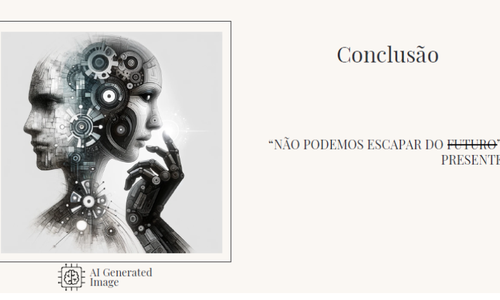
Inteligência Artificial generativa e as mudanças na educação superior
Profissionais e instituições do ensino superior devem adotar estrategicamente a IA generativa, capacitando estudantes para avançarem junto às novas tecnologias

Meu interesse pelos algoritmos e modelos matemáticos começou na faculdade de Engenharia em meados dos anos 80. Minha tese de graduação usava modelagem para calibrar os controladores de temperatura de fornos usados pelo Departamento de Química. Naquela época, o poder computacional era bem limitado. Os algoritmos foram escritos em linguagem C e assembly e rodavam em uma CPU Z80 da Zilog.
Comecei a estudar sobre fundos quânticos no ano passado, mas minha curiosidade aumentou depois de realizar o curso do Coursera “Using Machine Learning in Trading and Finance”. Decidi pesquisar mais sobre os algoritmos empregados, APIs disponíveis e estudar fundos existentes no exterior e no Brasil. Um dos pioneiros nesta área é o Medalion Fund da Renaissance Technologies LLC, do matemático Jim Simons cuja estória vou contar abaixo.
James Harris (Jim) Simons é um matemático graduado pelo MIT, nascido em 1938. Em 1982, depois de uma carreira que incluiu a Agência de Segurança Americana (NSA), Jim criou a “Renaissance Technologies LLC”, um Hedge Fund especializado em uso de modelos quantitativos derivados de análises usando matemática e estatística. Em 1988, a firma criou o “Medallion Fund”, que usava algoritmos aperfeiçoados pelo time de cientistas contratados pela Renaissance.
O Medallion Funds é considerado um dos fundos mais bem-sucedidos do mundo. Investindo em treasuries, commodities, derivativos e câmbio, o fundo rendeu 2480% aos seus cotistas no período de 1989 até 1999 e mesmo na crise da Bolsa de 2008, apresentou lucro significativo. O fundo está fechado a investidores externos e já rendeu mais de 100B$ de lucro desde sua criação. Ele faz parte de um portfolio da Renaissance que inclui outros 3 fundos que totalizam mais de 55B$ de patrimônio.
A Renaissance emprega mais de 200 especialistas que não tem formação na área de finanças, incluindo matemáticos, físicos e estatísticos e pelo menos um terço deles tem PhD. A firma usa “Quantitative trading” trabalhando enormes volumes de dados usando arquiteturas de processamento escaláveis e centenas de algorítmicos proprietários.
Jim Simons, tem uma fortuna estimada pela Forbes em cerca de 22BU$ e atualmente se dedica a filantropia através da Simons Foundation incluindo a iniciativa “Math for America” com a finalidade de recrutar e reter professores de matemática de alta qualidade para as escolas de Nova York. Quem tiver curiosidade de saber mais sobre ele, pode assistir o TED “Uma entrevista rara com o matemático que quebrou Wall Street”.
Os avanços na área de Inteligência Artificial, machine learning e a disponibilização de recursos computacionais em nuvem contribuíram para o aumento do potencial destes algoritmos e a redução significativa dos custos de implementação acelerando a adoção dos mesmos pela comunidade financeira.
Existem atualmente diversas APIs de algoritmos quantitativos para quem quiser criar um modelo. Alguns são gratuitos, disponíveis no modelo Open Source, outros pagos como os da empresa QuantHouse. Para encontrá-los basta uma busca no Google e você terá acesso a ampla documentação sobre suas funcionalidades e tutoriais de como usá-los. Existem também empresas especializadas em educação nesta área. Além do curso mencionado no início da matéria, vale a pena checar a QuantStart.
No Brasil temos algumas empresas especializadas em Fundos Quânticos incluindo a Pandhora, Giant Steps Capital, Murano Investimentos, Kadima Asset Management e SmartQuant investimentos. Saiba mais sobre eles nos links abaixo e avalie a performance dos fundos em diferentes situações do mercado.
Incluo aqui também alguns livros que podem interessar quem quiser se aprofundar no tema:
“The man who solved the Market: How Jim Simons Launched the Quant Revolution”,
“The Quants: How a new Breed of Math Whizzes Conquered Wall Street and Nearly Destroyed it”,
“Flashboys. Cracking the Money code (disponível em português e inglês) e
“Fortune’s Formula. The untold story of the scientific betting that beat the casinos and Wall Street”
Divirtam-se.
Consultor e membro do conselho da I2AI. Atuou como VP LATAM de Soluções Cognitivas da IBM, de 2016 a 2018, sendo responsável por fomentar a transformação digital dos clientes, com soluções de Inteligência Artificial baseadas em Watson. Em 2018, passou a liderar também o segmento de SaaS e PaaS (Software/Platform as a Service).
Formado em Engenharia Eletrônica pela UFRJ, com mestrado em Análise de Sistemas. Trabalhou na IBM por mais de 30 anos, onde ocupou diversas posições de liderança incluindo designações internacionais nos laboratórios de pesquisa da IBM em Hawthorne, Nova York e RTP-NC.
Um entusiasta de tecnologia, é também apaixonado por fotografia e esportes, especialmente ciclismo que pratica com destaque há mais de 30 anos.

Profissionais e instituições do ensino superior devem adotar estrategicamente a IA generativa, capacitando estudantes para avançarem junto às novas tecnologias

O desafio do uso em larga escala de Inteligência Artificial Generativa

Na encruzilhada da inovação, onde a tecnologia encontra a estratégia, a inteligência artificial emerge como o catalisador definitivo para redefinir a liderança na era digital.

Uma conversa com o Presidente da I2AI - Onédio S. Seabra Júnior - para falarmos sobre os temas mais quentes de Transformação Digital e Inteligência Artificial, num bate-papo informal com